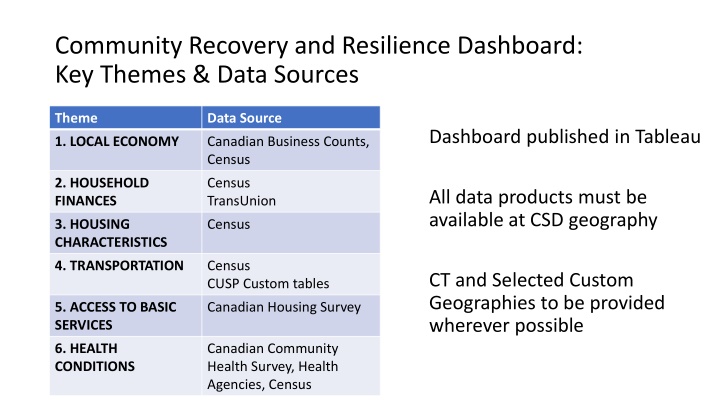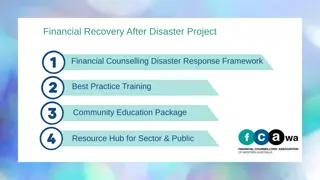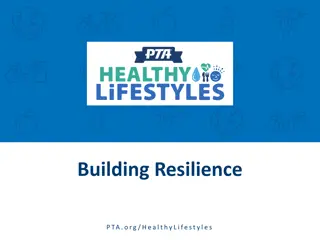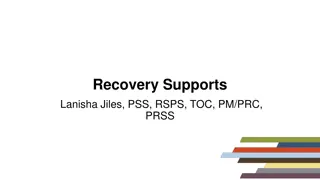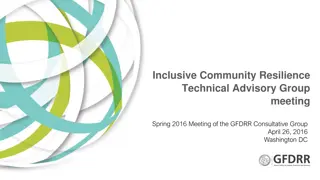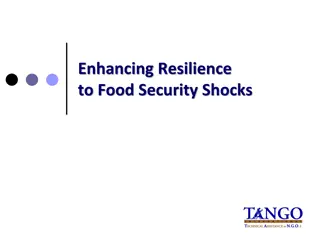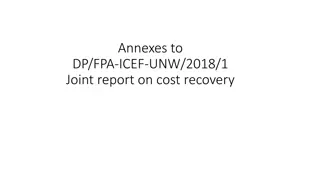Community Recovery and Resilience: Key Themes and Data Sources
Dive into the Community Recovery and Resilience Dashboard focusing on the local economy. Explore key themes and data sources like Canadian Business Counts and Census. The dashboard is published in Tableau, offering insights crucial for understanding economic recovery and building resilience post-disaster.
Download Presentation

Please find below an Image/Link to download the presentation.
The content on the website is provided AS IS for your information and personal use only. It may not be sold, licensed, or shared on other websites without obtaining consent from the author.If you encounter any issues during the download, it is possible that the publisher has removed the file from their server.
You are allowed to download the files provided on this website for personal or commercial use, subject to the condition that they are used lawfully. All files are the property of their respective owners.
The content on the website is provided AS IS for your information and personal use only. It may not be sold, licensed, or shared on other websites without obtaining consent from the author.
E N D
Presentation Transcript
Community Recovery and Resilience Dashboard: Key Themes & Data Sources Theme Data Source Dashboard published in Tableau 1. LOCAL ECONOMY Canadian Business Counts, Census 2. HOUSEHOLD FINANCES Census TransUnion All data products must be available at CSD geography 3. HOUSING CHARACTERISTICS Census 4. TRANSPORTATION Census CUSP Custom tables CT and Selected Custom Geographies to be provided wherever possible 5. ACCESS TO BASIC SERVICES Canadian Housing Survey 6. HEALTH CONDITIONS Canadian Community Health Survey, Health Agencies, Census
Placing an Equity lens on Recovery and Resilience All census data cross-tabulated by: Low income / not in low income and 8 Vulnerable Groups (and their inverse): 1. Immigrant status / recent immigrant (5 years) / established immigrant / non-immigrant 2. Visible Minority / non-visible minority 3. Indigenous / non-indigenous 4. Seniors (65+,75+,85+) / non-seniors 5. Lone-Parents / two-parent 6. Activity limitations / no activity limitations 7. Language spoken at home: Neither English nor French / Either English or French 8. Education Attainment: high school only/ post-secondary / university
Round 1 Indicators Ready to go Theme (Storyboards) 1. LOCAL ECONOMY Description Change in # of establishments by NAICS code, reflecting LFS loss of employment by industry Home-based employment Persons working at home, by income & vulnerable group Indicator Economic vulnerability Source Canadian Business Counts Census 2. HOUSEHOLD FINANCES Vulnerable Occupations Occupations in industries facing high job losses due, cross- tabbed by low income and vulnerable groups Census Household Income Household Debt Overcrowding Population density Access to a private vehicle Car commuters cross-tabbed by low income and vulnerable groups / % households with no person commuting by car Reliance on transit Transit commuters cross-tabbed by low income and vulnerable group / % households commuting only by transit Access to childcare Are childcare needs met within your neighbourhood? Average and Median Consumer debt Below standard of housing suitability Gross population density Census TransUnion census Census Census/CUSP 3. HOUSING CHARACTERISTICS 4. TRANSPORTATION Census/CUSP 5. ACCESS TO BASIC SERVICES Cdn Hsg Survey Access to medical services Access to grocery stores Are medical service needs met within neighbourhood? Cdn Hsg Survey Are grocery needs met within your neighbourhood? Cdn Hsg Survey
Round 2 Indicators deferred mainly due to data limitations Theme (Storyboards) 1. LOCAL ECONOMY Indicator Business Bankruptcies Description # of business bankruptcies (industry Canada) Limitation FSA only 2. HOUSEHOLD FINANCES Precarious employment Census non-permanent/part-time/limited hours Hard to define Emergency Benefits EI claims by class of worker and type of benefit and # of Canada Emergency Response Benefit applications Currently unavailable Household Savings Part of a broader measure of household net worth Requires modelling High density housing Low density % of dwelling in apts with 5 units+ % of single detached dwellings None None 3. HOUSING CHARACTERISTICS 4. TRANSPORTATION 5. ACCESS TO BASIC SERVICES Access to internet Home Internet access (Canadian Internet Use Survey) CMA/non-CMA only Reliance on Food Banks Partnership with Food Banks Canada Requires partnership Limited geography 6. HEALTH CONDITIONS Monitoring COVID-19 Cases, Deaths, Recoveries, Active cases, Tests Per 100,000 population Population living in Collective Dwelling CCHS Respiratory, Cardiovascular, Immuno- compromised, Smoking, Diabetes, Obesity, cross- tabulated by multiple variables Long term care pop Underlying health conditions None By health Region only
